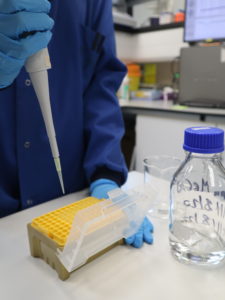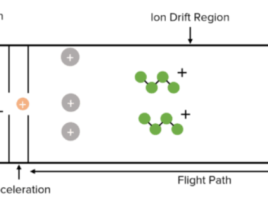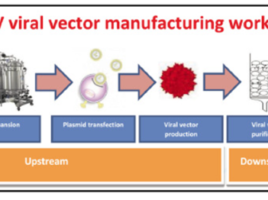Developing Good Pipetting Techniques
hOW IMPORTANT IS IT TO DEVELOP GOOD Pipetting Techniques?
In order to achieve optimal and reliable results for our diagnostic services we ensure all staff are
trained to a high degree in basic laboratory skills, such as liquid handling.
Pipettes are used daily in our lab for liquid handling. Two factors contribute to good laboratory
pipetting: tools and techniques. At the Bio-analysis centre we use mainly single channel manual
‘transferpette’ pipettes (Figure 1) which are known to be highly accurate at various volumes; however, the
most important factor is the expertise of the operator.
There are two main pipetting techniques: forward pipetting and reverse pipetting (/back pipetting).
Forward pipetting aspirates from the first stop and ejects until the second, whereas reverse
pipetting aspirates from the second stop and ejects until the first.
Other factors include:
– Immersion angle and depth
– Pre-rinsing
– Speed
– Temperature of environment and samples
– Performing pipette leak testing daily
Prolonged poor ergonomics while using pipettes can result in repetitive strain injuries (RSI) and
carpel tunnel syndrome (CTS) (El-Helaly et al., 2017). Studies have shown how higher work duration
increases the risk of developing RSI and CTS (El-Helaly et al., 2017, Bjorksten et al., 1994) . During our
training courses we recognise this issue and work with you to improve your pipetting technique
giving you the confidence to work comfortably in a laboratory environment.
Good laboratory pipetting is fundamental in our work producing accurate and precise data from the
HPLC and MS-LC. We are experienced in pipetting difficult solutions such as plasma and serum,
which are notoriously bubbly and therefore difficult to pipette!
Click here to find out more about our 1 day lab skills course.
References:
BJORKSTEN, M. G., ALMBY, B. & JANSSON, E. S. 1994. Hand and shoulder ailments among laboratory
technicians using modern plunger-operated pipettes. Appl Ergon, 25, 88-94.
EL-HELALY, M., BALKHY, H. H. & VALLENIUS, L. 2017. Carpal tunnel syndrome among laboratory
technicians in relation to personal and ergonomic factors at work. J Occup Health, 59, 513-
520.



